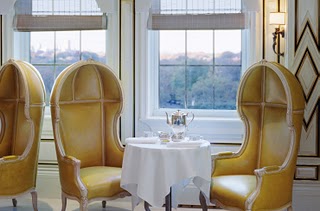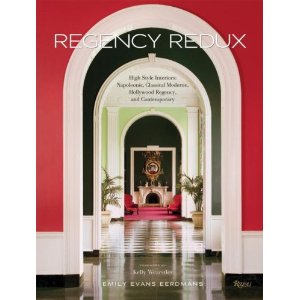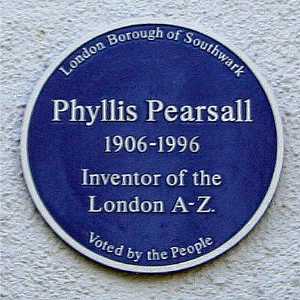Ah, the Regency and it’s interiors . . . a style so captivating that it’s essence has been re-vamped, re-thought and re-invented to this day. In his quintessential book on the topic, Regency Style, author Steven Parissien writes, “The Regency was a marvelous period for the visual arts. It was a time in architecture when Palladian grandeur was fused with Neo-Classical academicism and with the vivid visions of gifted designers such as Soane and Hope. Colours were more exotic and vibrant than they had been for centuries . . . ”
Nowhere was the Regency more exotic or vibrant than at George IV’s Brighton Pavilion. Awash in period fabrics and paints and filled with global geegaws and every concievable architectural embellishment, it still stands as an ode to excess.
Regency interiors on a much more realistic level can be seen at the Regency Town House in Hove, above, where I had the pleasure of visiting and meeting Dr. Nick Tyson several years ago. The Regency Town House is a five storey, Grade 1 Listed, terraced house of the mid 1820’s, designed by the Regency architect Charles Augustin Busby where Tyson heads a project to restore the townhouse to it’s original period state. The partition walls were pulled down and the original features painstakingly repaired or replaced. Tyson and his team made visits to neighbouring houses on the Square to search for examples of the original ceiling roses, fireplaces and plasterwork.Their efforts included painstakingly stripping the paint from the walls, layer by layer, and dating each color until they reached the original, Regency paint. Here, Regency architectural elements exist, but they are on a much more realistic, and liveable, scale than those found at the Pavilion.
In the 1930’s, Dorothy Draper took on a design project at Hampshire House, an apartment building located at Central Park South in New York, where she installed a mix of English and Italian baroque styles throughout, while adding oversized black and white doors, plaster reliefs carved in the ornate style of Grinling Gibbons and, of all things, chairs that look like nothing so much as modified Hall Porter’s chairs.
In fact, a few years back, decorators collectively took to installing Hall Porter’s chairs everywhere – including restaurants, such as that located within Bergdorf Goodman in New York, below.
In one of my parallel careers (magazine editor, travel writer, food critic), exactly which I cannot now remember, I reviewed a restaurant located within a Miami Beach hotel. It had just been revamped and the decorator had opted to use Hall Porter’s chairs as seating at some of the tables. After approving my review, the hotel’s PR person called to ask if I could change the phrase Hall Porter’s chair to Porter’s hall chair in the text. She thought it sounded better and that’s the term their decorator had used. I told her (emphatically) that I could not. And why. I did not tell her that her decorator obviously had no idea what a Hall Porter’s chair was, how it had been employed, much less why it was designed as it was -with it’s curving wing backs – in order to keep draughts off the heads and necks of the servants who had to sit in it all night long so as to be ready to open the door when their masters arrived home late at night. The fact remains that a Hall Porter’s chair was a piece of furniture meant to be used by a servant and no self respecting Regency homeowner would have used them otherwise. They certainly would not have felt honoured if made to sit in one whilst eating their dinner.
Nowadays, there has evolved yet another incarnation of the Regency design – Vogue Regency. And a 2008 book called Regency Redux: High Style Interiors: Napoleonic, Classical Moderne, and Hollywood Regency written by Emily Evans Eerdmans attempts to explain the various incarnations of Regency style through the 1940’s.
What remains inexplicable is why designers do not avail themselves of comtemporary sources, beginning with Rudolph Ackermann, in order to get the basis for their designs right. I suppose I might not be so aghast at some in the design world reinterpreting Regency style if they had any idea of the actual origins of the concept. Porter’s Hall chairs . . . . I ask you!















